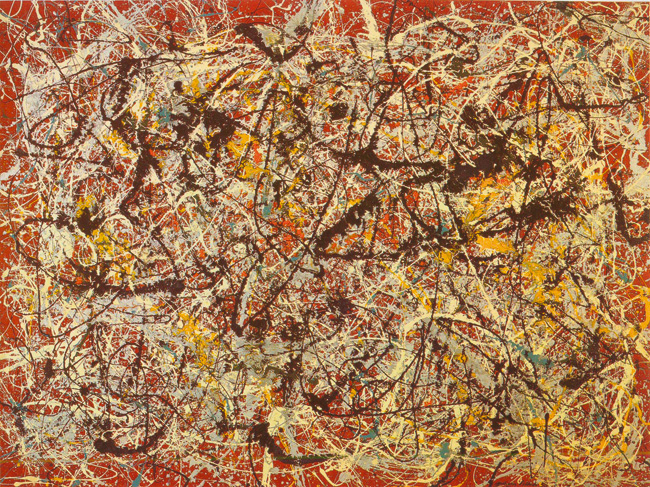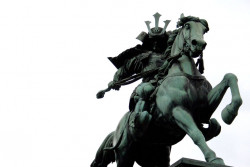
February 29, 2012
Jackson Pollock
The first major Japan exhibition of the abstract superstar
By Metropolis
Originally published on metropolis.co.jp on February 2012

Despite his art superstar status, Jackson Pollock’s avant-gardism has proved a stumbling block in Japan, where he has seldom been exhibited. Surprisingly, “Jackson Pollock: A Centennial Retrospective” is the first major Pollock exhibition ever held in Japan, and brings together about 70 works from the artist’s relatively short career.
Following the advances made by Cubism, Futurism, Surrealism, and all the other daring “isms” of early 20th century art, there seemed to be no more virgin artistic territory left for aspiring artists to stake out—until Pollock came on the scene during WWII. Taking inspiration from experimental drip paintings by the German Surrealist Max Ernest, who was sitting out the war in New York, Pollock pioneered Abstract Expressionism and the technique of Action Painting, in which paint was thrown onto a canvas laid on the floor. His results were dense, energetic compositions that were the visual equivalent of the free jazz experiments and Beat poetry of the same period, and made Pollock instantly famous.
The centerpiece of the exhibit, “Mural On Indian Red Ground” (1950), comes from an unusual source. This large explosion of paint and energy is being lent by The Tehran Museum of Contemporary Art in Iran. Recently valued at $250 million, it is considered the artist’s most valuable work, and something of a cultural hostage, having been purchased by the Shah of Iran during the Westernizing period that ended with the 1979 Islamic Revolution. The painting is now usually kept in an underground storage facility, along with works by other “decadent” Western artists that don’t fit with the ideals of the current regime.
The astronomical values placed on Pollock’s works may seem a little baffling, given that almost anyone with a few cans of paint and a bad attitude could create them, but their importance is partly historical. During the Cold War they served as ideological symbols of the “total freedom” available in the West. The value also reflects Pollock’s celebrity status as the ultimate artistic “hepcat,” and his untimely death in 1956 at the age of 44.
“Jackson Pollock: A Centennial Retrospective,” The National Museum of Modern Art, Tokyo, until May 6 (listing).







